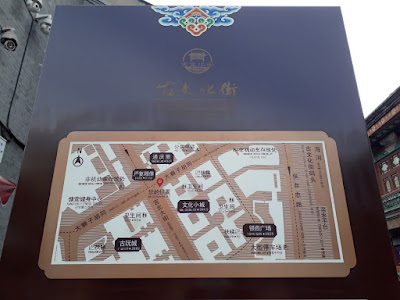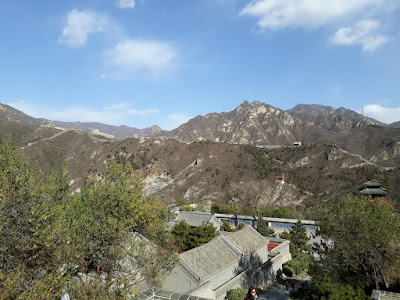Dream Cruise To Nowhere During Covid-19 Period
In view of the restrictions and limitations, Genting Dream Cruise offer a 2-night or 3-night holiday cruise to nowhere onboard the World Dream at promotional prices. You can enjoy exciting amenities on board including waterslide parks, VR ESC
Experience Lab, Zouk Beach Club, world-class shows, over 35 F&B
dining concepts, and more
Genting Dream is a cruise ship of Dream Cruises. She was initially ordered as Genting World for Star Cruises. The ship is designed for the Asian cruise market. The ship has a length of 335.33 metres (1,100 ft 2 in), a width of 39.7 metres (130 ft 3 in), a size of 150,695 GT, and a top speed of over 23 knots (43 km/h; 26 mph). The construction of Genting Dream, the first ship of the cruise brand, Dream Cruises, was completed on 12 October 2016, and the vessel sailed from Papenburg, Germany the next day. The ship was originally designed and ordered for Star Cruises, but she was transferred to Dream Cruises during construction. https://en.wikipedia.org/wiki/Genting_Dream
Dream Cruise Boarding Time:
Boarding time is around 1500hrs, depending on situations.
Things To Do On Dream Cruise:
1. Swimming
2. Jacuzzi
3. Water slides
4. Sunbathe or moon-gazing
5. Watch the shows and movies
6. Enjoy the foodThe Lido Dream Cruise:
Lido restaurant is inclusive in the package which is located at deck 16 Aft and serves (pork & lard free) and halal cuisine. There is also The Lido outdoor Snacks & Corners, open 24hrs.
The package also include Dream dining room lower which serves the Western Sets and Dream dining room upper, serving the Chinese Sets.
Dream Cruise Water Slide:
Comprises of 5 different slides, recommend to try.
Dream Cruise Entertainment:
Some shows have to book through the Dream Cruise app. Others will be on a first-come-first-serve basis.
Genting Dream Cruise Casino:
Comprises of table games
(Roulette, Blackjack, Baccarat, etc), slots and other electronic games. Table
games minimum bet ranges from $10 to few hundreds dollars.
Things To Note:
1. Go earlier for COVID-19 swab test (around 1 hr earlier) in case there ia a lot of people.
2. Once check into the cabin, connect to Drea& WiFi to book the "Entertainment" using the Dream App. Go to Entertainment > Zodiac Theater to check show timetable.
3. Look out for any shows in the app that cannot be booked earlier the next day.
4. Shows or performance not listed in the app but in the daily activities & events list are on a first-come-first serve basis. Que at the place around 30 minutes before the show start.
5. Go to deck 16 to book for the swimming pool or jacuzzi.
6. Go to breakfast, lunch and dinner places 30 minutes earlier before the place start to serve.
<iframe width="560" height="315" src="https://www.youtube.com/embed/ZL6auX-Md2c" title="YouTube video player" frameborder="0" allow="accelerometer; autoplay; clipboard-write; encrypted-media; gyroscope; picture-in-picture" allowfullscreen></iframe>
https://youtu.be/ZL6auX-Md2c
Keywords:
dream cruise
genting dream cruise
world dream cruise
genting cruise
world dream
genting dream
dream cruise promotion
explorer dream
world dream cruise ship
dream ship
dreamcruiseline
dream cruise 2021
dream cruise line
genting cruise to nowhere
dream cruise price
dream cruise ship
genting cruise line
world dream cruise price
genting world dream
dream cruise casino
genting dream cruise price
genting dream cruise ship
dream cruise to nowhere
dream cruises world dream
world dream ship
dream of cruise ship
genting dream cruise to nowhere
explorer dream cruise ship
genting dream ship
dream cruise promo
dream cruise halal
explorer dream cruise
dream cruise promotion 2021
dream cruise balcony deluxe
world dream cruise casino
world dream cruise to nowhere
the dream cruise
genting ship
dream cruise palace
genting world cruise
genting cruise price
dream cruise ticket price
dream cruise balcony
genting dream cruise promotion
cruise genting
2021 dream cruise
the palace dream cruise
dream cruise boarding time
genting dream cruise 2021
genting world dream cruise
cruise to nowhere genting
world dream cruise ticket price
dream cruise offer
dream cruise schedule
halal dream cruise
cruise to nowhere dream cruise
cruise world dream
genting dream cruise casino
cruise genting dream
dream cruise the palace
genting cruise ship
dream cruise cruise to nowhere
genting dream drinks price list
dream cruise credit card promotion
dream of cruise
world dream cruise halal
world dream cruise ship price
dream world cruise ship
genting cruise world dream
getaway cruise by dream cruises
loyalty dreamcruiseline
the world dream cruise
palace dream cruise
the world dream
genting global dream
world dream genting
dream cruise gym
genting cruise casino
world dream dream cruises
dream cruise entertainment
dream cruise shopping
dream cruise water slide
world dream halal
cruise ship world dream
world cruise genting
dream cruise dates
dream cruise departure time
dream cruise deluxe balcony
tiket dream cruise
dream cruise website
the lido dream cruise
dream cruise cost
awani dream cruise
dream cruise packing list
genting dream cruise price 2021
genting dream casino
things to do on dream cruise
uob dream cruise
dream cruises explorer dream
genting world dream cruise to nowhere
singapore genting dream cruise
dream cruise zipline
dreams of cruise ships
seacation dream cruise
dream cruise ticket
genting cruise promo
dream cruise
genting dream cruise
world dream cruise
genting cruise
world dream
genting dream
dream cruise promotion
explorer dream
world dream cruise ship
dream ship
dreamcruiseline
dream cruise 2021
dream cruise line
genting cruise to nowhere
dream cruise price
dream cruise ship
genting cruise line
world dream cruise price
genting world dream
dream cruise casino
genting dream cruise price
genting dream cruise ship
dream cruise to nowhere
dream cruises world dream
world dream ship
dream of cruise ship
genting dream cruise to nowhere
explorer dream cruise ship
genting dream ship
dream cruise promo
dream cruise halal
explorer dream cruise
dream cruise promotion 2021
dream cruise balcony deluxe
world dream cruise casino
world dream cruise to nowhere
the dream cruise
genting ship
dream cruise palace
genting world cruise
genting cruise price
dream cruise ticket price
dream cruise balcony
genting dream cruise promotion
cruise genting
2021 dream cruise
the palace dream cruise
dream cruise boarding time
genting dream cruise 2021
genting world dream cruise
cruise to nowhere genting
world dream cruise ticket price
dream cruise offer
dream cruise schedule
halal dream cruise
cruise to nowhere dream cruise
cruise world dream
genting dream cruise casino
cruise genting dream
dream cruise the palace
genting cruise ship
dream cruise cruise to nowhere
genting dream drinks price list
dream cruise credit card promotion
dream of cruise
world dream cruise halal
world dream cruise ship price
dream world cruise ship
genting cruise world dream
getaway cruise by dream cruises
loyalty dreamcruiseline
the world dream cruise
palace dream cruise
the world dream
genting global dream
world dream genting
dream cruise gym
genting cruise casino
world dream dream cruises
dream cruise entertainment
dream cruise shopping
dream cruise water slide
world dream halal
cruise ship world dream
world cruise genting
dream cruise dates
dream cruise departure time
dream cruise deluxe balcony
tiket dream cruise
dream cruise website
the lido dream cruise
dream cruise cost
awani dream cruise
dream cruise packing list
genting dream cruise price 2021
genting dream casino
things to do on dream cruise
uob dream cruise
dream cruises explorer dream
genting world dream cruise to nowhere
singapore genting dream cruise
dream cruise zipline
dreams of cruise ships
seacation dream cruise
dream cruise ticket
genting cruise promo




























